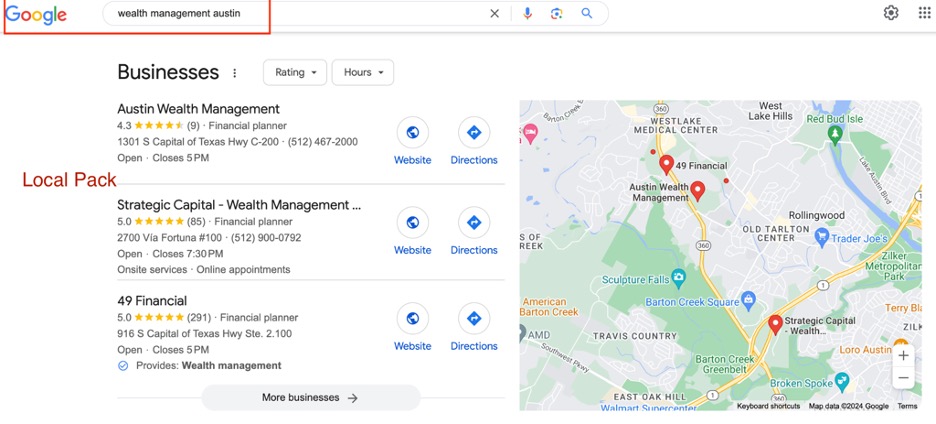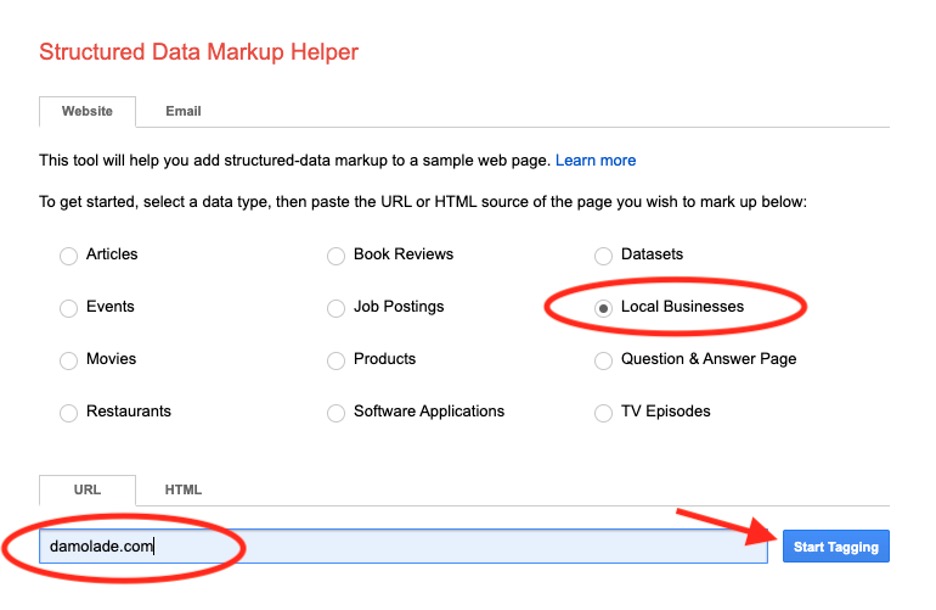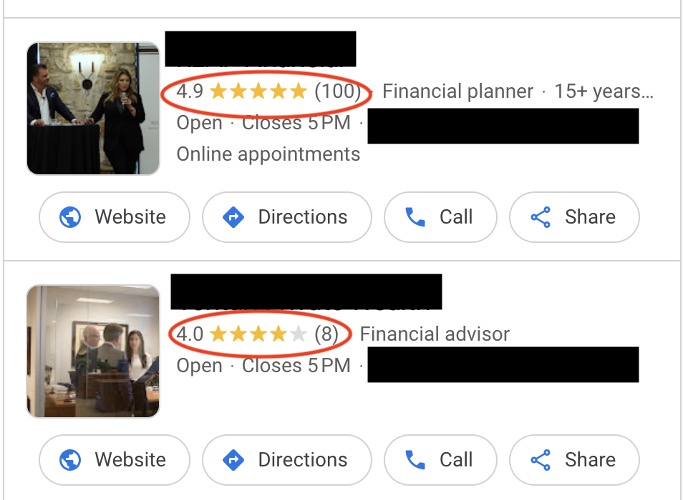
Unlocking Local SEO For Small Businesses: Stand Out in The “Google Map Pack”
Imagine spending months optimizing your website for SEO only to find out that big-name brands and huge directory sites populate the first page of the search results.
This makes it hard for you to compete and even harder for your local customers to find your business.
This guide will show why you must focus at least part of your client acquisition strategy on local SEO if you are a business serving local clients or customers.
We will provide actionable tips to help you stand out from the competition and drive leads to your business.
Let’s jump into optimizing for the Local Map Pack!
What Is The Google Map Pack?
The Local Pack, also known as the Google Local Map Pack, prominently displays the highest-ranking local listings in Google’s local search results for your area or the search location.
The Google Map Pack displays businesses’ geographic locations, contact details, operating hours, and additional useful information.
Clicking on a listing gives users more details about the company, the option to call, and the ability to navigate to the business’s physical location using Google Maps.
With this information readily available, potential clients are more likely to recognize your proximity and see ratings and reviews, increasing the chances of conversion.
Take the example of an Austin, Texas, wealth management firm with two goals: 1. visibility in their region and 2. national visibility for their thought leadership on their blog.
This tells the team at damolade to first focus on local SEO for their home page and service pages and optimize informational keywords on their blog pages to target national searches. We call this a hybrid client acquisition strategy: optimizing for both local and national SEO on the right landing pages and posts.
Getting back to the client…
A typical customer of this wealth management firm would search for “wealth management services,” Google would provide sites offering information about these services.

What about the local listings?
Effectively targeting a specific geographic region enables you to build stronger connections with individuals in your local community. This is crucial, considering 81% of consumers rely on Google to assess nearby businesses.
Not only that but, the local results typically appear above standard organic search results, as the algorithm recognizes the user’s intent to locate a physical address.
This means your small business can rank higher on the page than the big brands!
Also, the Google Map Pack brings the additional benefit of showcasing customer reviews.
94% of consumers say positive reviews make them more likely to use a business, so businesses should consider this feature hugely beneficial to new client acquisition.
Now that we understand the why behind optimizing your site for Local SEO, let’s look at the how.
How Do You Optimize Your Site for Local SEO?
1. Set up Your Google My Business Profile Page
A Google Business Profile is your first priority when optimizing for Local SEO. Once live, It allows for all the great benefits we discussed earlier, like reviews, operating hours, photos, etc., to be visible to potential buyers within a specific geographic location.
The key is ranking high in the Local Pack, ideally within the first three results. This is referred to as the Local 3-Pack. There is no one way to get ranked in the top three, but we will discuss the top ways to improve your odds next!
Follow the directions in the link to Google above to set up your page, and keep these tips in mind:
- Make sure your Name, Address, and Phone Number (NAP) are accurate across all places you list your business. When we say exactly the same, we mean exactly the same. No weird suite numbers, or dots and dashes on Facebook, and a different story over at Google. Make it nice. Make it match.
- Choose as many categories as possible that focus on your services.
- Keep your description short and sweet. It can’t hurt to add your website’s home page keyword here. If you don’t know what the keyword is for your home page, the next section is for you!
2. Keyword Research
We discuss keyword research extensively in our Complete Guide To On-Page SEO. The only difference in local SEO is strategically using local modifiers for keyword phrases on certain landing pages.
For instance, if your primary service is wealth management and you serve the geographic region around Austin, Texas, you want to determine what users are using to search for these services in your area.
You can start by brain-dumping all the potential keywords you can think of into a document or sheet. If you’re having trouble coming up with your first few, let Google Search show you some common terms.
Type your main service category into a new browser window, and Google will automatically suggest terms. These are great “seed” keywords to begin your research.
Free research can be done using Google Keyword Planner.

After you have your seed list, SEMRush is an excellent tool for completing your SEO strategy, beginning with research and finalizing keyword selections for each page.

If you aren’t sure how to choose, refer to our on-page SEO blog that will give you your sweet spot (hint: relevant to your services, good search volume, and low competition).
You’ll also want to consider how easy it will be from a UX perspective to weave these keywords naturally into your copy. No one likes a keyword-stuffed, hard-to-read landing page.
Once you get your seed keywords into the keyword software, you should start to see a picture of what keywords will work for you based on the sweet spot we mentioned above.

“Wealth management Austin” looks like a great keyword for your home page or main service category page.
You’ll want to incorporate that keyword into your metadata, body copy, and page headings (h1s, h2s).
This local Austin firm does a great job optimizing body copy for local SEO:

That local SEO strategy is paying off well for them, as they are ranking #2 in the Google Local Map 3-Pack (March 2024) for their main service keyword.
Their optimized Google My Business Profile and on-page SEO strategy synergy are undoubtedly driving tons of clicks and calls to their website.

If the thought of keyword research and selections overwhelms you, don’t worry. Our local SEO services are available to you. You can always book a free initial call with our Founder, Danielle, and she will be happy to discuss a customized strategy based on your specific goals.
3. Build Citations
Now that your keywords are selected and your landing pages optimized for the right keywords, it’s time to build links/citations to your site! A citation is earned when you add your (NAP) Name, Address, and Phone Number to an authoritative online directory like Yelp, Facebook, Yellow Pages, or your local Chamber of Commerce.
We mentioned ensuring your business details are the same on your GMB profile as on your website.
Well, the same goes for other profiles you create.
Make sure these are accurate across all places you list your business. When we say exactly the same, we mean exactly the same.
No weird suite numbers or dots and dashes on Facebook, and a different story over at Google. Make it nice. Make it match.
Review and update your information at least once a year to improve search engine confidence in your business, which will lead to improved local search rankings.
Inconsistent NAPs can damage local SEO efforts by sending search engines mixed signals about your company’s details. This inconsistency can cause search engines to display incorrect information or decrease your search rankings, resulting in lost trust and opportunities.
Tracking, reviewing, and optimizing your NAP consistency may seem strenuous, but using business listing management software can simplify the process.
The software lets you manage, edit, and track all your business listings from one place. It’s an investment that guarantees peace of mind and enhanced local SEO ranking.
We use Brightlocal to manage business listings and build local citations to boost clients’ rankings. We find it to be the most cost-efficient software on the market.
4. Add Local Schema Markup to your Website
Google wants to provide the most geographically relevant sites for local search. A great tactic for this is to add a Schema local business markup to your website.
This helps search engines understand your NAP info better, likely giving you a competitive edge over other local sites in your industry.
Go to Google Structured Data Markup Helper to create your schema markup for a local business. Implementing schema markup can require advanced knowledge of HTML and assistance from your web developer.

You can test the code snippet on Google’s Structured Data Testing tool to check whether you set it up properly. If you miss something while filling in some tags, Google will give you recommendations or additional warnings.
5. Create Content That Answers User Queries
Now that you have chosen keywords for your main service category pages and included your local area in your metadata and on-page copy, it is time to start answering the questions that users typically ask search engines – on your blog.
For example, suppose your services are wealth management and financial planning. In that case, potential clients will usually ask Google things like – “How much does a wealth management advisor typically cost, “what does a wealth management advisor do?”– these are keywords!
Taking this example further, you may be curious about how you determine what information users and potential clients are searching for.
Remember all that keyword research you did? Well, that research should have uncovered Informational Keywords you can use at this stage of the strategy.
These are keywords looking for an answer to a specific question or general information like how to, definitions, what is, and who is.
Grow brand awareness of your knowledge and services by optimizing posts, educational content, videos, and FAQs to target queries and featured snippets that will attract top-of-the-funnel traffic.
Add internal links from informational content to your main service pages. Many times, this part of the on-page SEO strategy gets overlooked or implemented incorrectly.
When you use keywords within your content, you can link them to another page appropriate to that keyword.
Those terms are called anchor text.
Anchor text can provide both search engines and users with relevant contextual information about the content of the link’s destination.
 Source: moz.com
Source: moz.com
In the above link code example, ‘Tiny dancing horse’ is the anchor text for the link.
For example, writing a blog post about what a wealth management advisor does and mentioning wealth management services is an excellent internal link opportunity to link to that service page using the page keyword.
Use “wealth management services” as the anchor text to link to your wealth management service landing page.
You just created an optimized internal link! This will boost the SEO of your service landing page.
6. Ask Your Customers For Reviews
Those pretty little gold stars next to your business name carry a lot of weight. Which result would you click? The one with 100 5-star reviews or the one with only eight 4-star reviews? If you focus on delivering client happiness with every service, getting glowing testimonials of your work should be no problem. Google will even provide you with a link to make it easy for them to head straight there to do so!

Other sites like Facebook and Yelp are also important local citations where you can request and promote your happy clients.
A recent study by SEMrush of the Local Pack for 5,624 businesses found the average star rating to be 4.1. More importantly, the business in the number one position had, on average, more positive reviews than those in positions 2 and 3.
In other words, more positive reviews received consistently will improve a business’s ability to rank, be seen, and gain targeted local traffic. Read more on Search Engine Journal.
7. Use SEO tools for Position Tracking and Reporting
As with any business strategy, you wouldn’t embark on a new product launch or service offer without a way to measure its progress against your goals.
The same goes for any SEO project, especially local SEO, which can potentially deliver phone calls and foot traffic straight to your door. Famous business management expert Peter Drucker says, “You can’t manage what you don’t measure.”
Some no-cost choices include dependable platforms such as Google Analytics and Google Search Console, which provide essential insights into your online performance. For a more thorough strategy and the ability to track keywords at the page level, consider investing in premium solutions like Ahrefs and SEMRush or hiring an SEO company to monitor and report for you.
8. Monitor, Analyze, and Adjust Your Approach
Monitoring and analyzing the data sources is the only way to know what is working and what isn’t.
Once you know what keywords are moving up to Page 1, which aren’t moving at all, and what is driving traffic and conversions overall, you can adjust your strategy and test new ideas. Our wealth management client wanted to move their financial advisor keywords to Page 1, but most were on Page 5 when we first met with them. Using the strategy outlined above, we moved the keywords up to Page 1 and moved the overall traffic needle for this local firm in a big way that impacted their bottom line. Let us know how we can help you!
For further reading on local SEO, check out – https://www.searchenginejournal.com/category/seo/local-search/


